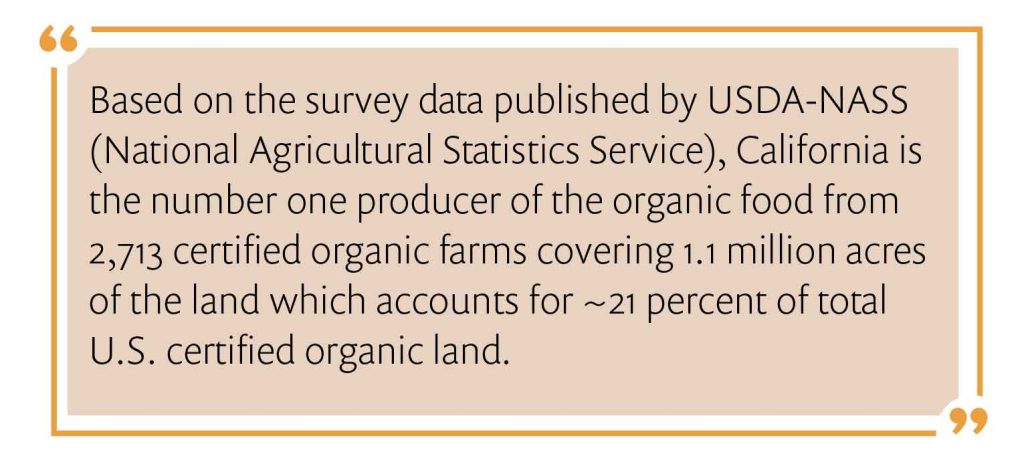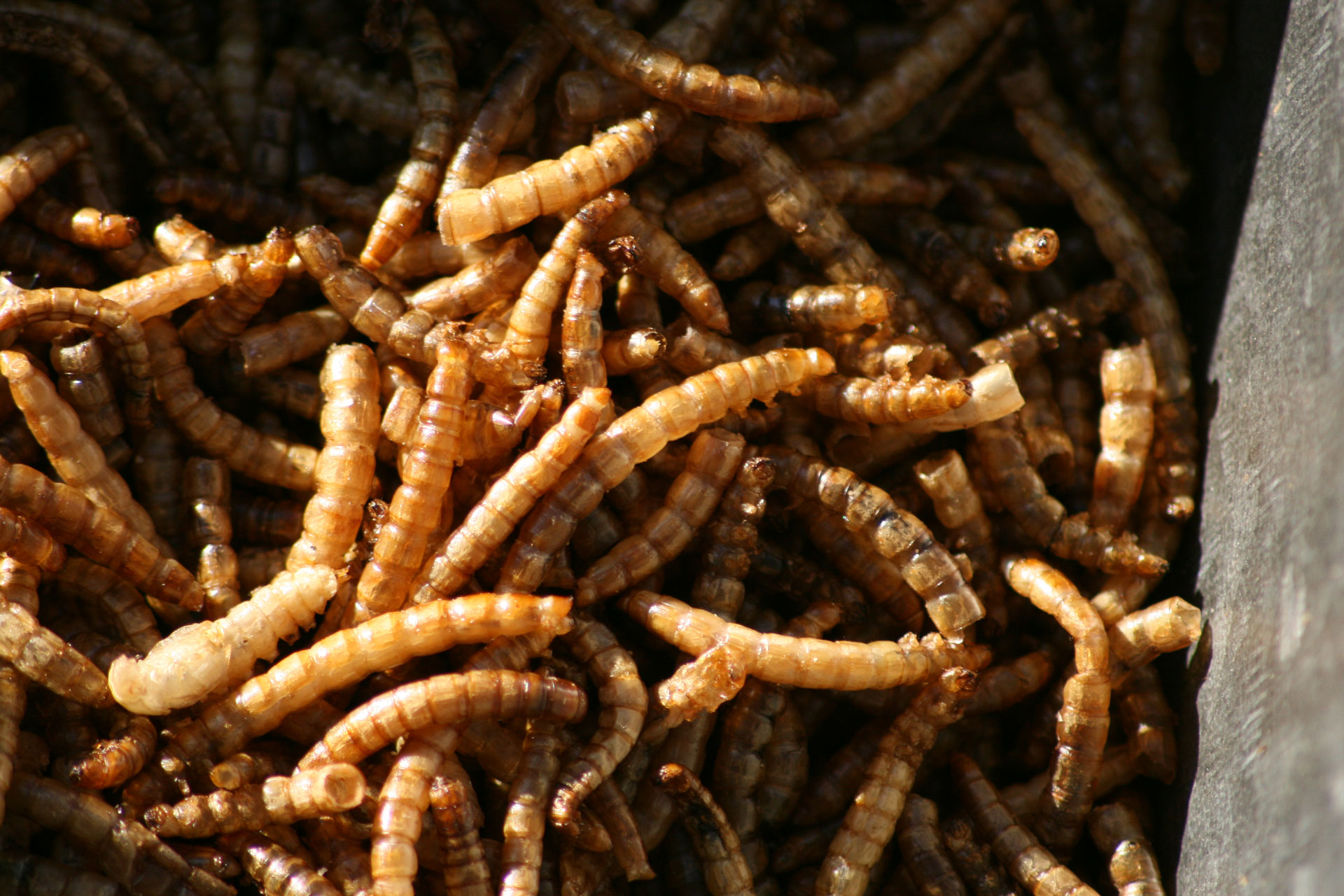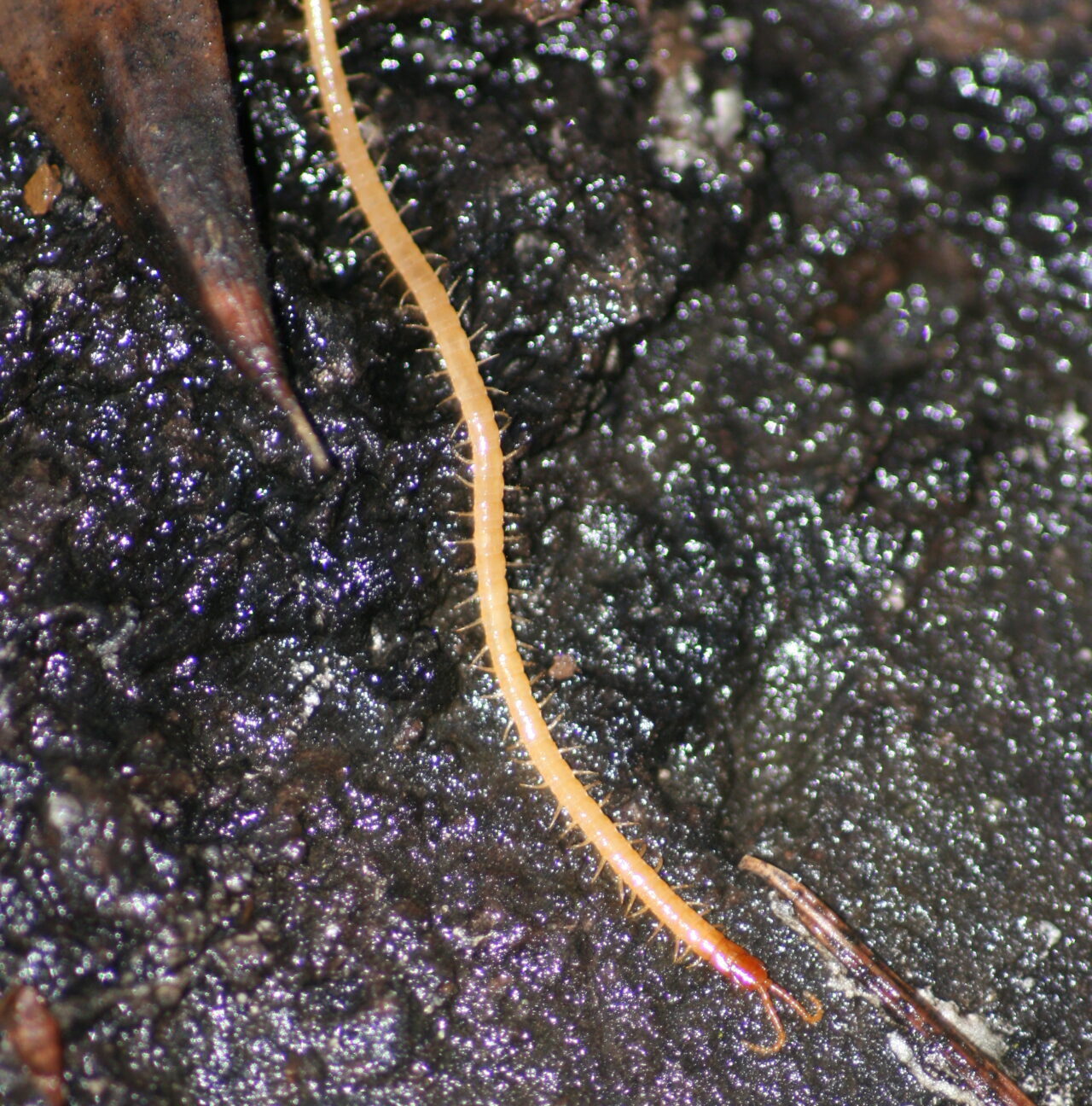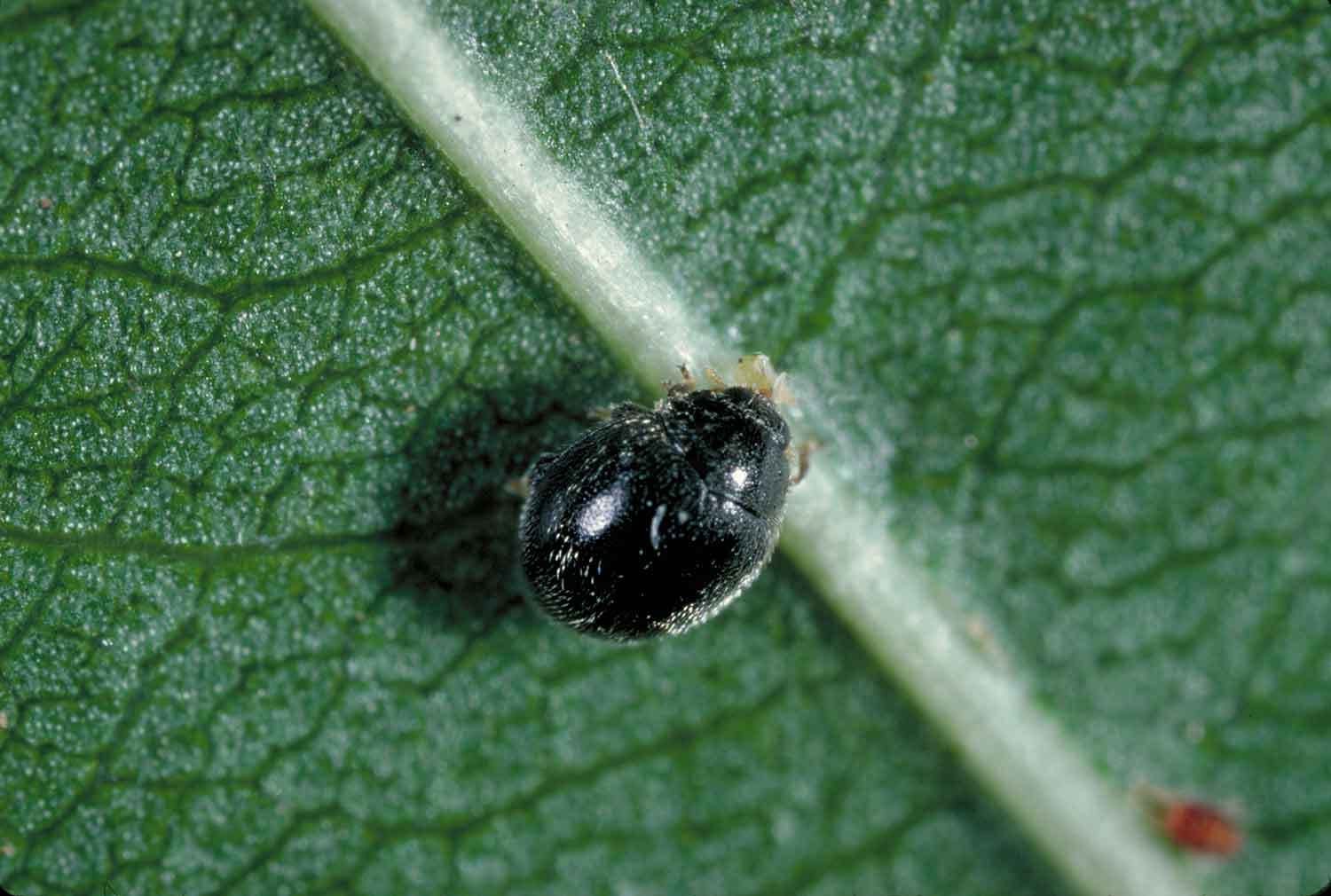
THE UNITED STATES DEPARTMENT of Agriculture’s (USDA) National Organic Standards Board defines organic food as the food that is produced without the use of conventional pesticides, petroleum-based fertilizers, sewage-sludge-based fertilizers, herbicides, genetic engineering (biotechnology), antibiotics, growth hormones, or irradiation. The land that produces organic food should not have the prohibited substances used for at least three years before the harvest of an organic crop.
The demand for organic foods, including tree nuts, has been on the rise in the United States, and elsewhere. Based on the survey data published by USDA-NASS (National Agricultural Statistics Service) in 2017, California is the number one producer of the organic food from 2,713 certified organic farms covering 1.1 million acres of the land which accounts for ~21 percent of total U.S. certified organic land. Based on survey, there have been over 150 farms with ~15000 acres of total nut crop production in California (5897 acres walnut, 5954 acres almond, and 1520 acres pistachio) with crop value exceeding ~65 million dollars (See Figure), and this figure has likely increased in the past four years or so.
Major Arthropod Pests of Tree Nuts
A variety of insect and mite species infest nut crops in California. These include worm pests (lepidopterans: navel orangeworm, oriental fruit moth, codling moth, peach twig borer, leafrollers), several species of webspinning (two-spotted spider mites, Pacific spider mites) and non-webspinning mite species (brown mite, European red mite). In addition, several species of large and small plant and stink bug species often pose a threat to almond and pistachio growers with substantial damage in some years and areas of the Central Valley. A few species of aphids, mealybugs, ants and scale insects are prevalent in nut crop orchards and need attention in
many respects.
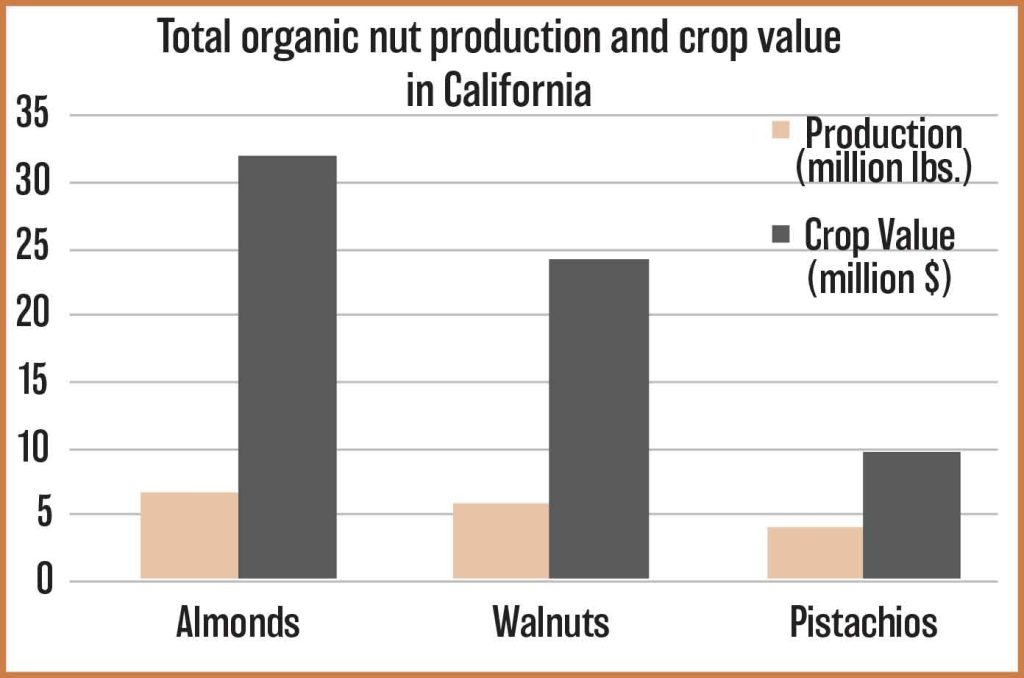
IPM in Organic Orchards
Integrated pest management (IPM) has been a ‘mantra’ to manage crop pests, and certainly, has been the case in managing major pests in the nut crop production systems in California. IPM is the pest management strategy that involves decision making by utilizing the knowledge about the particular pest and its phenology, economic thresholds, and utilize preventative, and curative control measures. The goal of IPM is to manage the pest populations before it hits the economically damaging level by integrating all suitable and compatible control options, including cultural, biological, and chemical control as a last resort. The success of IPM in non-organic production systems is often due to availability of efficacious synthetic chemical pesticides. However, due to the limited availability of allowable and efficacious active ingredients in an organic production system, it is imperative to follow other pest management tactics carefully, and more often so that the pest population has not reached to the extreme level.
Available Pest Control Tools and Research Gaps
Navel orangeworm (NOW) is the most damaging pest across three major nut crops grown in California. Female moths lay eggs on susceptible nuts (i.e., split nuts, and nuts that are damaged by other causes) and larvae burrow into the fruit and eventually to the nutmeat and cause direct damage. There are well established cultural practices (winter sanitation, early harvest) and newer options such as mating disruption technique available. Removal of the last year’s nuts which carry overwintering NOW larvae, from the trees and orchard floor during the winter has been a proven strategy in reducing the in-season navel orangeworm population. This practice should be the most critical for organic production as in-season insecticides are not very reliable and limited in number. Also, harvesting the nuts before the late generation’s egg laying is another cultural strategy to minimize the navel orangeworm damage.
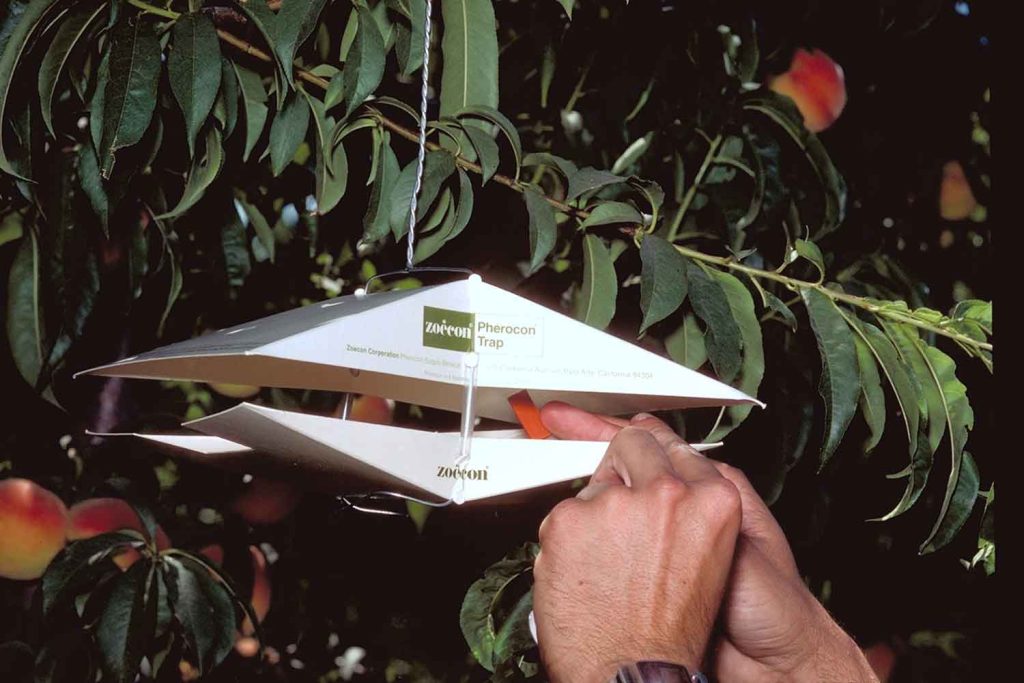
Mating disruption is a proven and non-insecticidal method for NOW control in nut crops. It is a behavioral control in which the mate-finding by male moth is disrupted by applying a large quantity of synthetic pheromone to the orchard. The goal is to reduce the population gradually over the generations, and years, although growers can be benefited from one season application as well. At least two commercial mating disruption products are currently available for organic use. Consult your pest control advisor (PCA) and local farm advisor for further information
on this.
For the insecticide control, there are a few organically acceptable insecticides available to use in addition to other IPM practices described earlier for NOW control. Examples include spinosad-based, pyrethrin-based insecticides. There are several newer organic insecticides in the market, but we do not have enough research based information yet for any recommendations. Navel orangeworm is unpredictable, and difficult pest to manage, it is highly recommended to utilize a combination of available monitoring tools (i.e., pheromone and oviposition-based traps, harvest samples) to track insect and damage activities in the orchard and use this information for in-season management.
The second major group of the insect pests of concern is true bugs, mainly leaffooted bug and a few species of the stink bugs. These bugs have piercing and sucking type (i.e., straw-like) mouthparts and attack on developing fruits. The feeding can cause a substantial crop loss due to the nut abortion early in the season and by producing defect kernels at harvest from mid-to-late season infestations. Visual and trap-based monitoring of the orchard regularly is essential to detect bugs while they are moving into the orchard from their overwintering habitat early in the season. Plant and stink bugs are difficult to control with other practices except for the use of broad-spectrum insecticides, and the insecticides for organic use are not very effective. General practice is to apply pyrethrin-based insecticide, some neem-based products, and this is the area where there has been a significant lag in terms of efficacy trials looking at various insecticides for organic use. Now, with the spread of the new invasive stink bug species, brown marmorated stink bug (BMSB) to crops including damage to almond, there is a desperate need for exploring some new tools to control these bugs, especially in organic production systems.
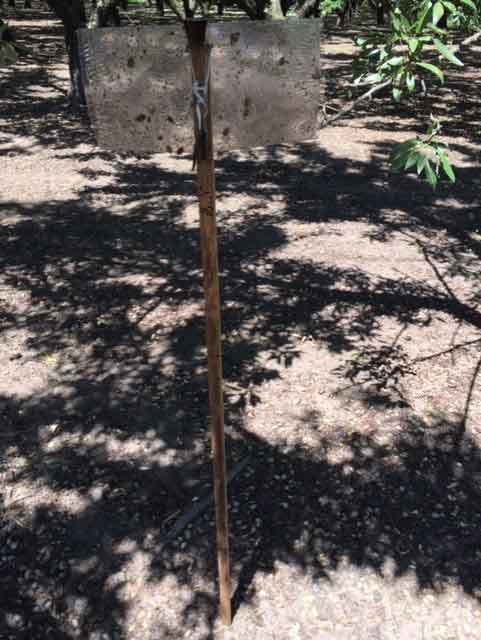
The third group of the arthropod pests of the nut crops is spider mites. Spider mites can effectively be controlled by following the IPM practices in nut crop orchards. Predatory mites and other mite predators are active along with spider mites in nut crop orchards. In recent years, we have seen the surge of six-spotted thrips and spider mite destroyer beetle (i.e., Stethorus beetle), both are effective predators, throughout the Central Valley almond orchards, and there have been examples that these predators keeping mite population under control in San Joaquin Valley almond orchards. The caveat is that growers and PCAs need to follow the available monitoring and sampling practices to understand the phenology of the pest and predators, plus apply the pest management program that is not disruptive to these natural enemies. Some cultural practices such as a drier orchard environment can foster the mite population, and practices that reduce these conditions can reduce the mite population. If needed, oil-based miticides are effective and available to use against mites should they reach the thresholds. See a recent article about mite control in organic production by David Haviland, UCCE Kern (https://bit.ly/31IJIAu).
The fourth group of insects is relatively small sucking insect pests such as aphids, mealybugs, scale insects. These insects often have a robust natural enemy complex in the orchard. In most cases, they are capable of keeping the population below the threshold levels. It is also critical to remember; these pest-natural enemy interactions are often in a delicate balance situation which is likely to be disrupted easily when using broad-spectrum insecticide, especially early in the season. Conducting regular monitoring and sampling is highly recommended to track the insect pest, and predator dynamics population in orchards. UCIPM has published protocols for sampling scale and mites in almond, walnut, pistachio during the dormant season. The sampling can be done by examining pest and natural enemy presence and abundance in fruit spurs, scaffolds, branches, fruiting woods, and recording the abundance.
Almond: http://ipm.ucanr.edu/PMG/C003/m003dcdmtspursmpl.html
Walnut: https://www2.ipm.ucanr.edu/agriculture/walnut/Dormant-Monitoring/
Pistachio: https://www2.ipm.ucanr.edu/agriculture/pistachio/Soft-Scales/
For San Jose scale and non-webspinning mites (brown and European red mites) infestation in almonds can be treated with the dormant oil (6-8 gallons/acre) during the delayed dormant timing
Summary
Although demand and acreage for organic crops have been rising, effective tools for organic pest management are limited. Organic growers need to deploy available pest management tools strategically that includes utilizing monitoring tools, cultural practices, biological control, any other preventative options available as much as feasible. Organic growers should not solely rely on insecticides as they are costly, and the majority of them may not be very effective compared to the chemical insecticides used in conventional orchards.

